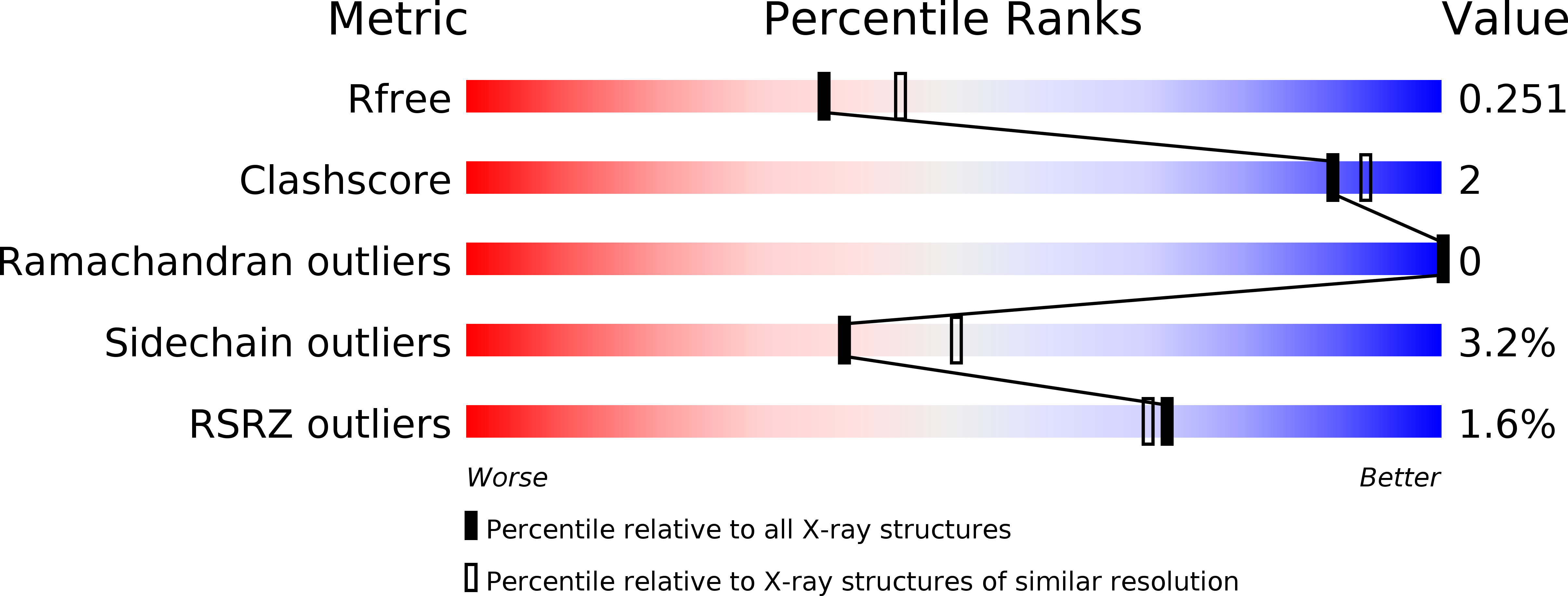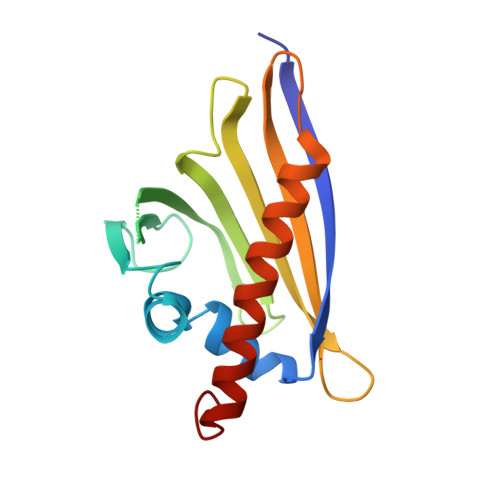The Strawberry Pathogenesis-Related 10 (Pr-10) Fra a Proteins Control Flavonoid Biosynthesis by Binding to Metabolic Intermediates.
Casanal, A., Zander, U., Munoz, C., Dupeux, F., Luque, I., Botella, M.A., Schwab, W., Valpuesta, V., Marquez, J.A.(2013) J Biological Chem 288: 35322
- PubMed: 24133217
- DOI: https://doi.org/10.1074/jbc.M113.501528
- Primary Citation of Related Structures:
4C94, 4C9C, 4C9I - PubMed Abstract:
Pathogenesis-related 10 (PR-10) proteins are involved in many aspects of plant biology but their molecular function is still unclear. They are related by sequence and structural homology to mammalian lipid transport and plant abscisic acid receptor proteins and are predicted to have cavities for ligand binding. Recently, three new members of the PR-10 family, the Fra a proteins, have been identified in strawberry, where they are required for the activity of the flavonoid biosynthesis pathway, which is essential for the development of color and flavor in fruits. Here, we show that Fra a proteins bind natural flavonoids with different selectivity and affinities in the low μm range. The structural analysis of Fra a 1 E and a Fra a 3-catechin complex indicates that loops L3, L5, and L7 surrounding the ligand-binding cavity show significant flexibility in the apo forms but close over the ligand in the Fra a 3-catechin complex. Our findings provide mechanistic insight on the function of Fra a proteins and suggest that PR-10 proteins, which are widespread in plants, may play a role in the control of secondary metabolic pathways by binding to metabolic intermediates.
Organizational Affiliation:
From the Instituto de Hortofruticultura Subtropical y Mediterránea (IHSM-UMA-Consejo Superior de Investigaciones Científicas), Departamento de Biología Molecular y Bioquímica, Universidad de Málaga, 29071 Málaga, Spain.



















